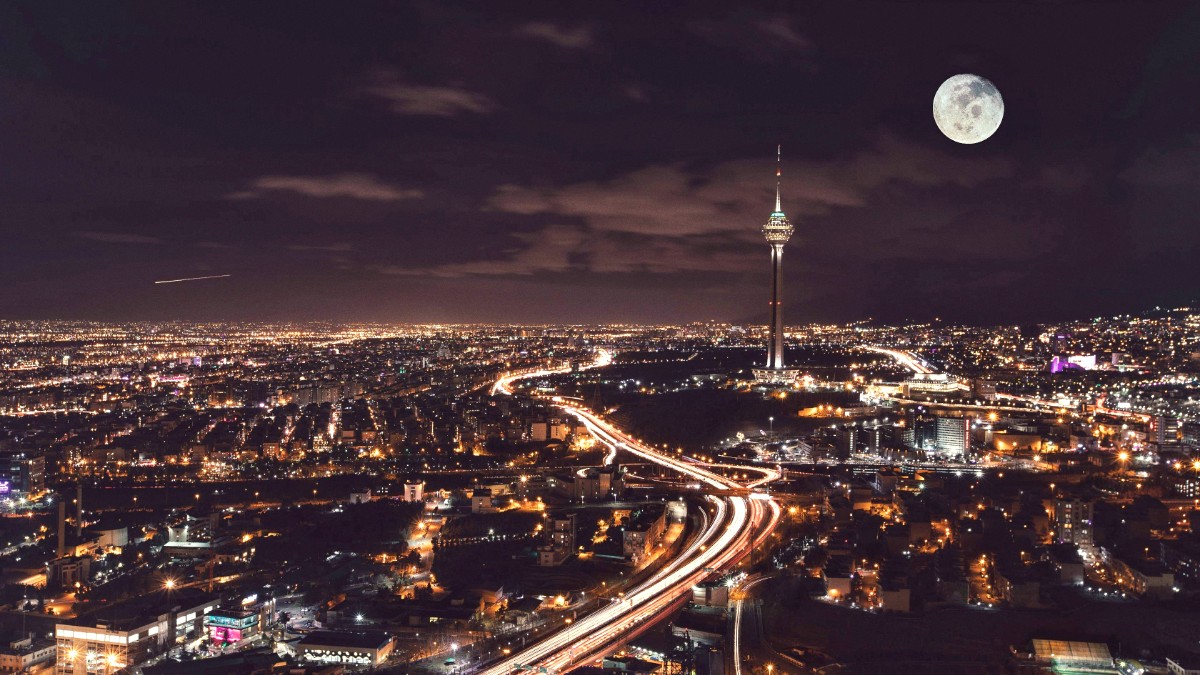
Iran
Expect warmth from its people and beauty in its landscapes. Tehran awaits, ready to surprise and inspire.
Tehran sits in the north-central part of Iran, nestled at the southern slopes of the Alborz mountain range. Its elevation varies considerably, from around 1,100 meters (3,600 feet) in the south to about 1,700 meters (5,600 feet) in the north.
This elevation difference shapes the climate, with northern Tehran generally cooler and receiving more precipitation, including snow in winter. The city spreads across a semi-arid plain, leading to hot, dry summers and cold winters.
The imposing presence of the Alborz mountains, especially Mount Tochal, defines Tehran's skyline. These mountains form a natural boundary to the north and feature popular recreational areas for hiking and skiing. Rivers like Darakeh and Darband flow down from the mountains, forming picturesque valleys within the city’s northern reaches.
Tehran’s location positions it on Iran’s central plateau, connecting it to other major cities and regions. Its position makes it a natural hub for transportation and commerce. The geographical diversity within and around the city presents varied experiences, from high-altitude hikes to exploring arid plains just beyond the city limits.
Around 1,100 meters (3,600 feet).
About 1,700 meters (5,600 feet).
Semi-arid continental climate.
Generally cooler, more precipitation, winter snow.
Across a semi-arid plain, hot dry summers, cold winters.
Tehran’s history, while less ancient than cities like Isfahan or Shiraz, holds much interest. It became a significant settlement in the 13th century. Its fortunes shifted dramatically when the Qajar dynasty named it the capital of Persia in 1796.
This decision turned Tehran from a provincial town into a burgeoning city, attracting population and power. During the Qajar era, many of Tehran’s famous landmarks, including parts of the Golestan Palace, took shape, reflecting a blend of traditional Persian and early European architectural styles.
The 20th century marked another period of rapid transformation for Tehran. Under the Pahlavi dynasty, beginning in the 1920s, the city underwent extensive modernization. Broad avenues were constructed, new government buildings and universities appeared, and a more Westernized urban planning approach reshaped its layout.
Tehran skyline with the majestic Alborz mountains as a backdrop.
Tehran presents visitors a dynamic urban experience filled with cultural depth and striking contrasts. Expect to find grand palaces and museums demonstrating Iran’s rich heritage, alongside modern art galleries and bustling cafes.
The Grand Bazaar pulses with daily commerce, a sensory experience of sights, sounds, and smells. In contrast, northern Tehran features cooler climates, upscale shopping, and direct access to the Alborz mountains for hiking and winter sports.
The city's infrastructure includes an extensive metro system making navigation straightforward and affordable.
English is spoken in tourist-focused areas. Learning a few Farsi phrases will greatly enrich your interactions with hospitable locals.
Food culture is central, with a wide array of traditional Persian dishes, from street food to fine dining.
General safety for travelers is high. Adopting local customs and dress codes promotes respectful visits.
Tehran presents cultural depth, grand palaces, museums, and modern art galleries for visitors.
The city's Grand Bazaar pulses with commerce, and bustling cafes add to the dynamic urban environment.
Northern Tehran provides cooler climates, upscale shopping, and direct mountain access for outdoor activities.
Travelers often encounter warm and hospitable locals who enjoy interacting with visitors.
The Tehran Metro makes navigating the sprawling city straightforward and affordable for all.
Tehran presents a rich journey, often challenging preconceived ideas about Iran.